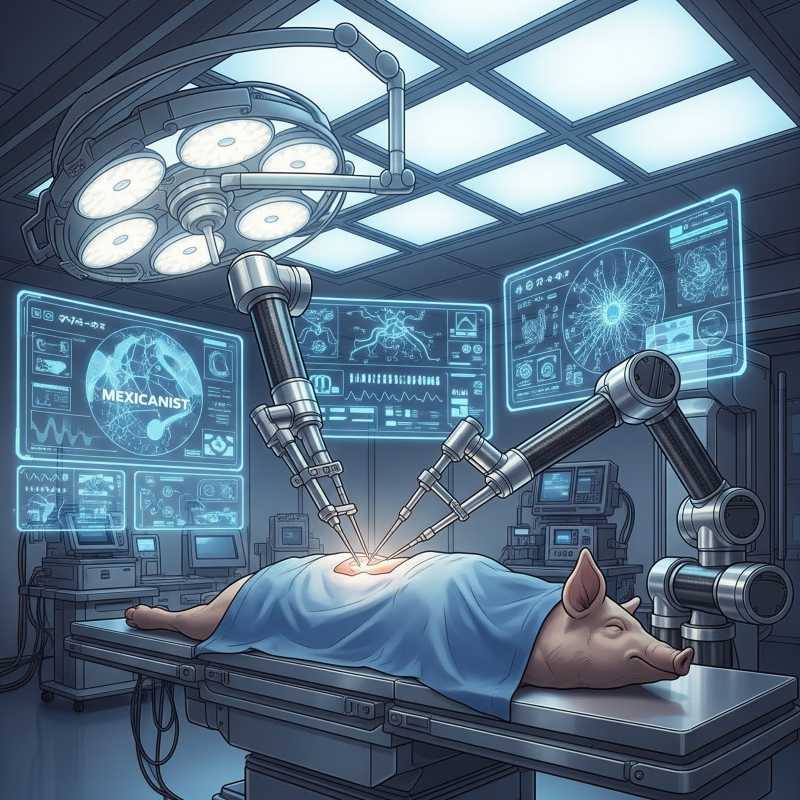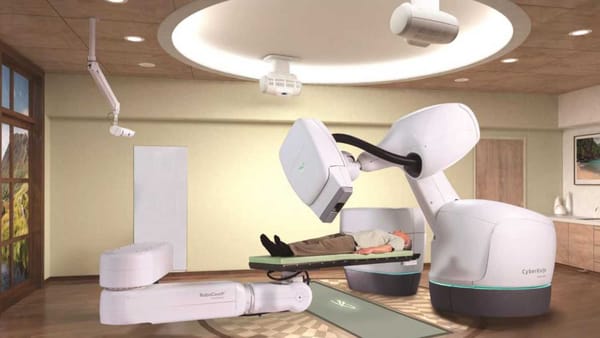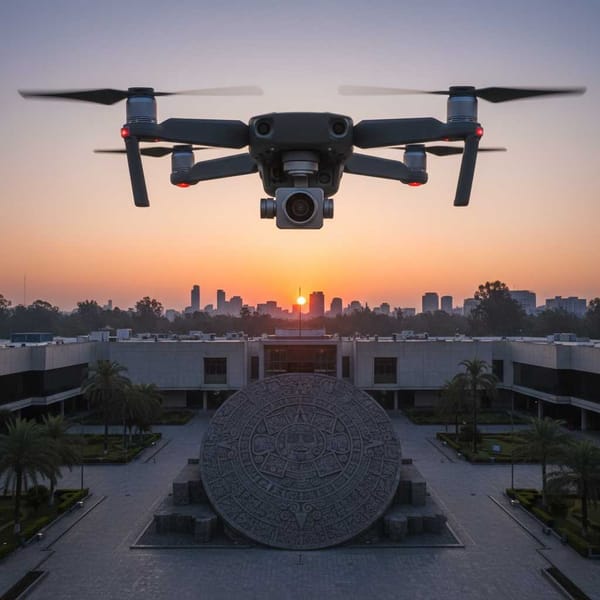How a Breakthrough in Autonomous Surgery Is Reshaping Medicine
A robot just performed complex surgery on a pig — alone, calmly, and with the precision of a veteran surgeon, marking a leap toward a future where AI saves lives in operating rooms worldwide.

In a dimly lit lab at Stanford University, a robot with delicate, articulated arms performed something once thought impossible: it operated on a living animal—without human hands guiding it, without a surgeon at the console, and without a pre-programmed script. The patient? A pig. The procedure? A complex laparoscopic surgery. The robot’s name: SRT-H, short for Surgical Robot Transformer-Hierarchy. And what it did that day wasn’t just groundbreaking—it was a glimpse into the future of medicine.
This wasn’t the first time a robot had performed surgery. For years, systems like the da Vinci Surgical System have allowed surgeons to operate with enhanced precision through robotic assistance. But those are teleoperated machines—remote-controlled tools. The surgeon is still in full control, moving the robot’s arms like a high-tech puppeteer.
SRT-H is different. It’s autonomous. It sees. It thinks. It adapts. And in doing so, it may be the most significant leap in surgical technology since the invention of the scalpel.
From Scripted Routes to Real-World Intelligence
Earlier attempts at robotic surgery had a major limitation: they were rigid. One notable experiment at Johns Hopkins involved a robot performing a laparoscopic procedure on a pig—but only under highly controlled conditions, with specially marked tissues and a fixed surgical plan. As Dr. Krieger, a leading researcher in the field, put it: “It was like teaching a car to drive on one road. Impressive, yes—but useless in the real world.”
SRT-H changes that. Think of it not as a robot that follows a map, but as one that learns to drive in any weather, on any road, reacting to pedestrians, potholes, and traffic jams in real time. It uses advanced AI to interpret anatomical structures, detect variations between patients, and make decisions mid-surgery—adjusting its movements, correcting errors, and even improvising when complications arise.
During its trial, SRT-H successfully completed anastomosis—the delicate joining of two tubular structures, such as intestines—a procedure that demands millimeter precision and an intuitive understanding of tissue tension and blood flow. When unexpected bleeding occurred, the robot identified the source, applied pressure, and rerouted its plan—all without human intervention.
“It acted with serenity,” said Ji Woong (Brian) Kim, the biomedical engineer who led the development team, first at Johns Hopkins and now at Stanford. “If we can apply that word to a machine, it was calm, deliberate, and precise. Like a seasoned surgeon.”
The breakthrough wasn’t just about hardware. It was about hierarchy—the “H” in SRT-H.
The robot operates on a multi-tiered decision-making system. At the top, a high-level AI interprets the overall goal: “Perform a bowel anastomosis.” Below that, mid-level modules handle specific tasks: “Locate the resection site,” “Clamp the intestine,” “Suture with 8 stitches.” And at the lowest level, real-time sensors and micro-controllers adjust for tremors, tissue elasticity, and instrument slippage—thousands of times per second.
This layered intelligence allows SRT-H to learn from mistakes, much like a human surgeon. In one simulation, the robot misjudged the tension of a suture. Instead of repeating the error, it recalibrated its force model and succeeded on the second attempt. “It didn’t just fix the problem,” Kim said. “It understood why it happened.”
Why This Changes Everything
Imagine a world where:
- A rural clinic in Guerrero, with no access to a specialist, can perform life-saving surgeries with the help of an autonomous robot.
- Battlefield medics deploy AI surgeons in mobile units to treat wounded soldiers within the “golden hour.”
- Emergency rooms respond to trauma cases with robotic precision—faster, more consistently, and without fatigue.
This isn’t science fiction. It’s the trajectory we’re on.
And the implications go beyond access. Human surgeons, for all their skill, are subject to fatigue, bias, and variability. A study published in The Lancet found that surgical error rates can vary by as much as 300% between hospitals. Robots like SRT-H could standardize care, reducing complications and improving outcomes across the board.
But there are hurdles. Trust is the biggest one.
“People are comfortable with a robot assisting a surgeon,” said Dr. Elena Ruiz, a bioethicist at UNAM. “But handing full control to a machine? That’s a psychological leap. We need transparency, rigorous testing, and public dialogue.”
Regulatory bodies like the FDA and COFEPRIS are already evaluating SRT-H for human trials. The process will be slow, cautious, and rightly so. No one wants a “robot gone rogue” scenario. But the data so far is compelling: in animal trials, SRT-H outperformed human surgeons in precision and consistency, with fewer complications.
The Human Touch in a Robotic Age
And yet, the question lingers: Will robots replace surgeons?
The answer, experts say, is no—but they will redefine the role.
“The future isn’t human versus machine,” said Dr. Kim. “It’s human with machine. The robot handles the precision tasks, the repetitive motions, the data analysis. The surgeon focuses on diagnosis, decision-making, and patient care—the art of medicine.”
Think of it like aviation. Pilots still fly planes, but autopilot handles the bulk of the flight. The difference? Now, the autopilot can land the plane in a storm, with zero visibility.
In Mexico, where healthcare disparities are stark, this technology could be transformative. From the artesanas of Amuzgo to the bustling hospitals of Cancún, the promise of equitable, high-quality care is closer than ever.
Back in the lab, the pig recovered fully. No infections. No complications. Just a small scar—and a quiet revolution in the making.
SRT-H is not just a robot. It’s a symbol of what happens when artificial intelligence meets human ingenuity. It’s a testament to the idea that technology, when guided by ethics and empathy, can serve not to replace us, but to elevate us.
As Dr. Kim put it: “We’re not building machines to take over surgery. We’re building them to perfect it.”
And when the first human patient lies on that operating table, with a robot preparing to save their life, one thing will be certain: medicine will never be the same.




